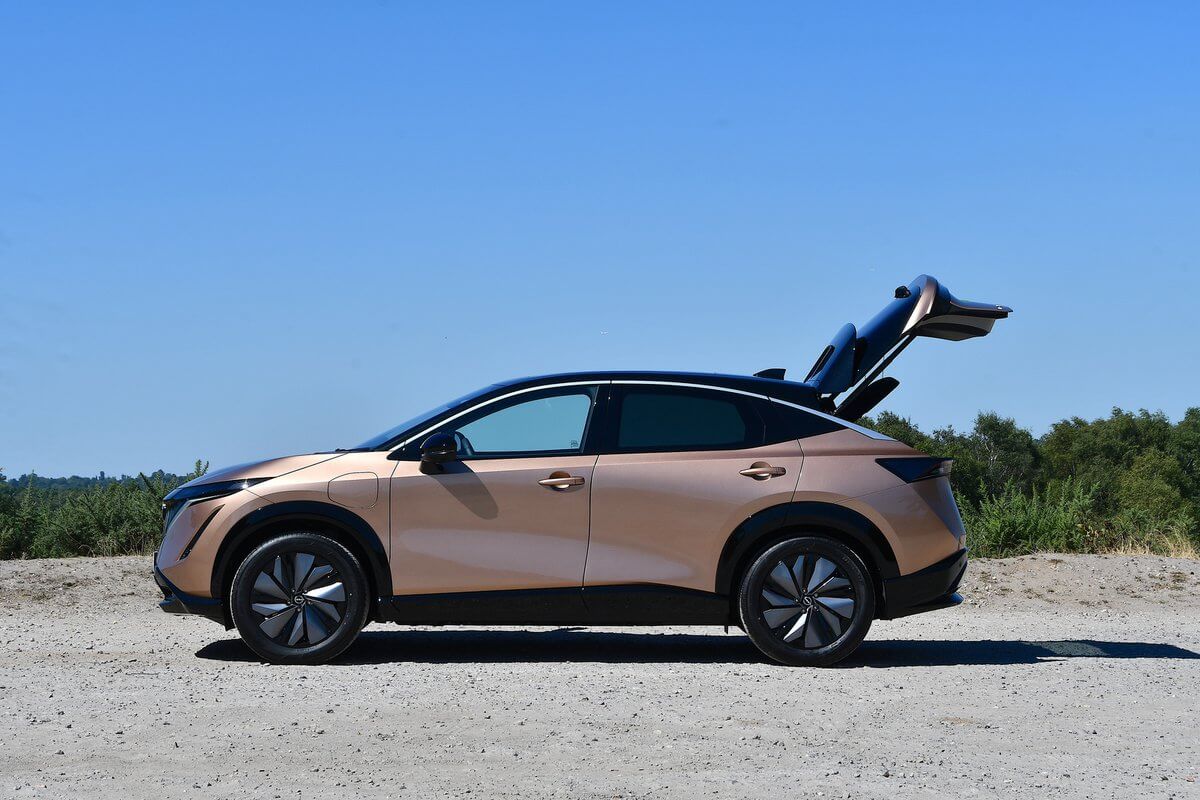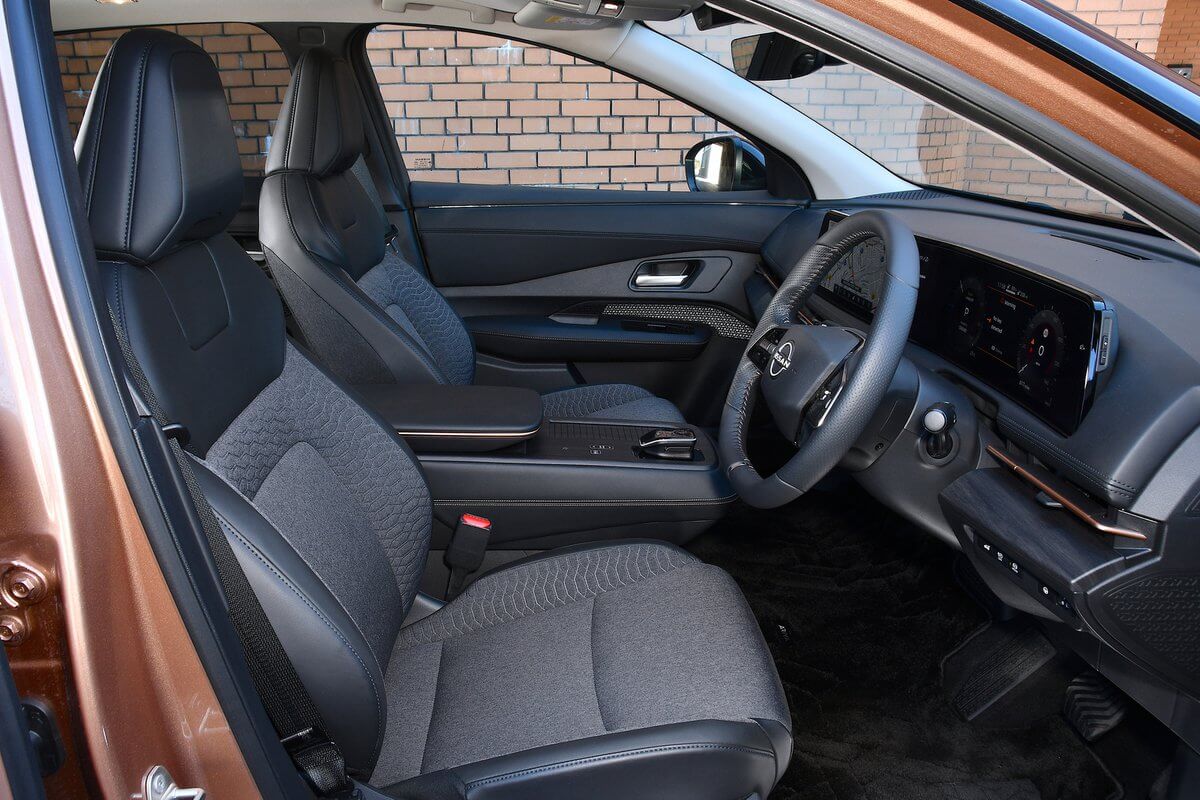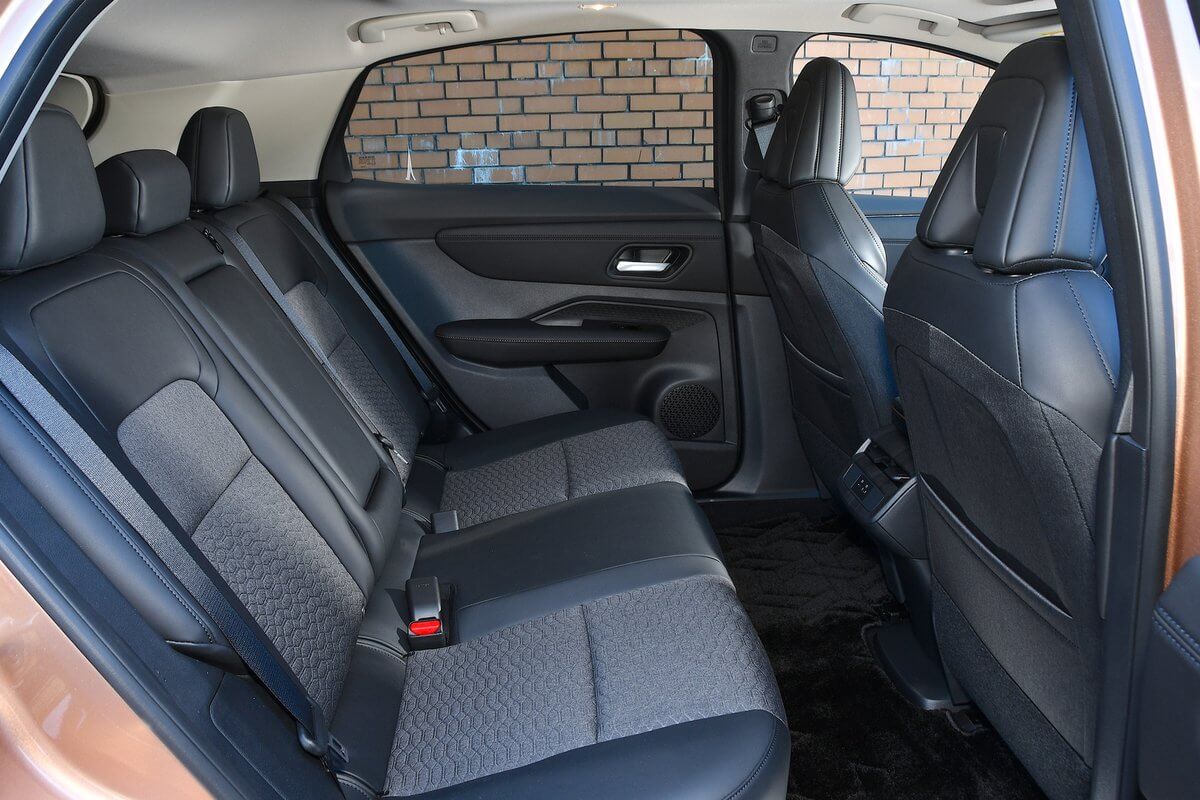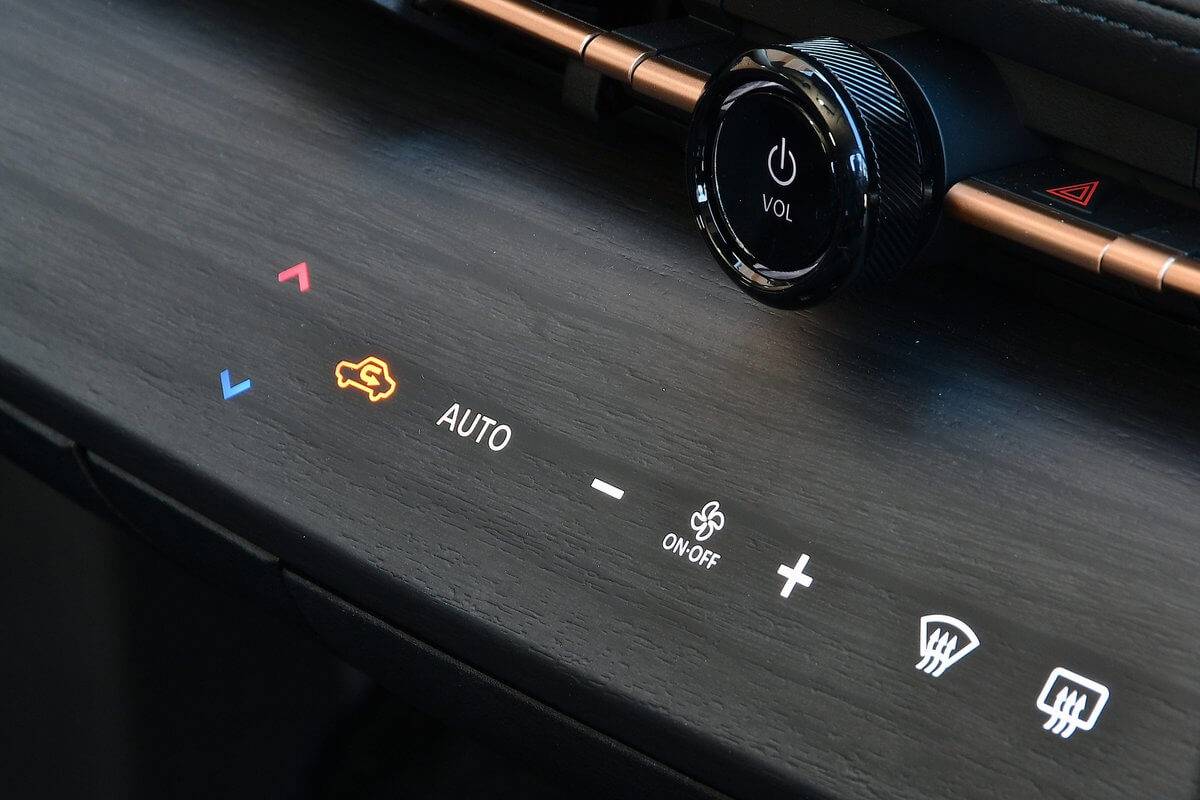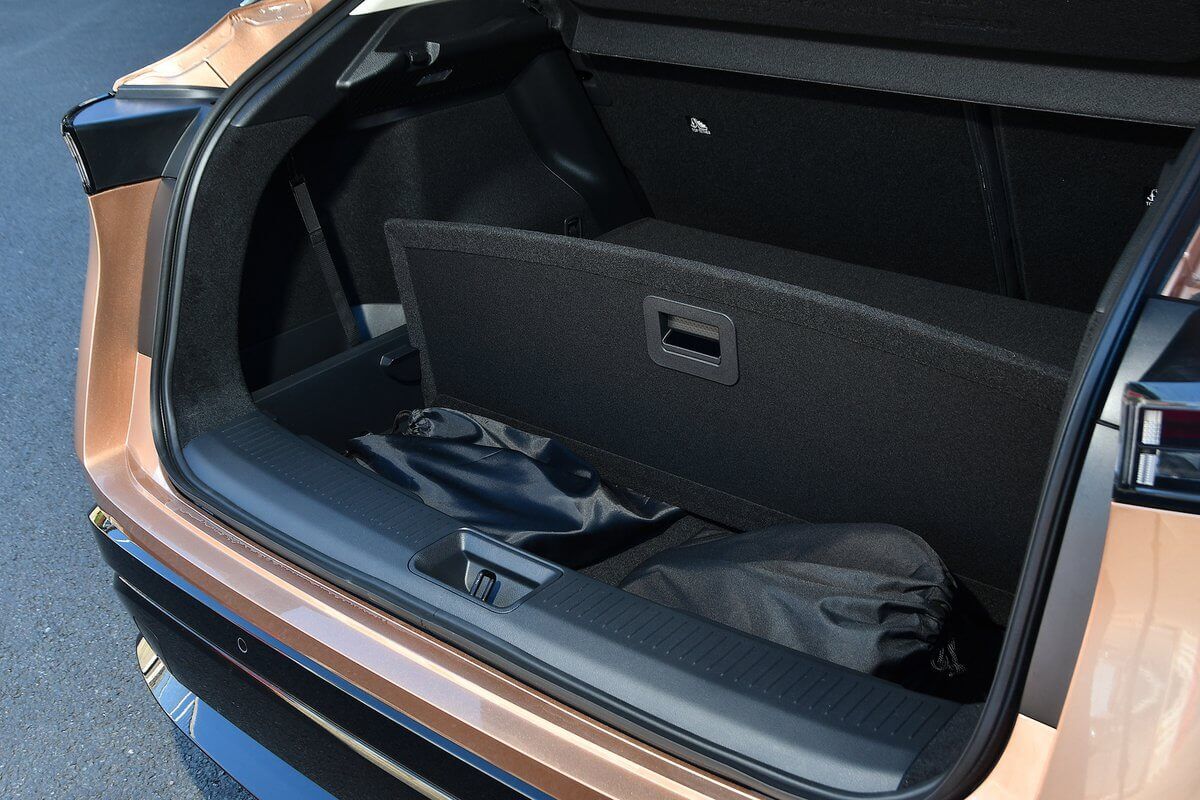How good is the new Nissan Ariya? We test drive the new electric SUV ahead of an expected – although unconfirmed – arrival in Australia.
We’re not entirely sure how an inanimate object can be ‘honourable’, but that’s the meaning of this electric SUV’s name. The Nissan Ariya is the Japanese brand’s second proper electric car and its first new one for more than a decade.
We say ‘proper’ because we’re not counting the E-NV200 Combi – that’s effectively a van with windows. We are, however, counting the Nissan Leaf, which was responsible for revolutionising the electric car.
Why has it taken Nissan so long to launch a follow-up to the Leaf? Well, it’s fair to say that electric vehicles didn’t take off as quickly as the company hoped. So, while the Leaf was undoubtedly a pioneer, the Ariya starts its life (we’re doing the personification now) on the back foot with a battalion of rivals to contend with. That’s not so much an issue in Australia as many rivals are not here yet (VW ID 5, Skoda Enyaq, Ford Mustang Mach-E, Volvo C40, etc), but being unconfirmed for our own market, it could face the same problem here if it does make a late arrival.
Nissan Ariya Performance and Powertrains
The Nissan Ariya is available with a choice of two batteries, and front or all-wheel drive. The all-wheel-drive ‘e-4orce’ variant is actually pretty quick too, sprinting from 0-100km/h in the same time as the Ford Focus ST hot hatch.
The Nissan Ariya’s range depends on which battery you choose. The cheaper and smaller 63kWh option can officially manage 402km on a full charge. That said, we’d expect 270 to 240km in the real world.
If that’s not enough for your needs, the 87kWh battery will be the one to go for. It pushes the cost up but also increases the official range to 529km, matching the Kia EV6 and Enyaq 80, if not quite the Tesla Model Y Long Range.
Both battery options come with a single electric motor as standard, which drives the front wheels. Acceleration isn’t particularly rapid by electric car standards but the Ariya is still much quicker than most petrol or diesel alternatives. It managed to do 0-100km/h in 7.6 seconds in our tests, which is just behind the EV6. The Ariya is really easy to drive smoothly because of its well-judged and predictable response to accelerator inputs.
The 87kWh battery is also available with all-wheel drive, called e-4orce by Nissan. That adds a second electric motor to drive the rear wheels, lowering the maximum range to 499km but also making the Ariya much faster in the process. In fact, it drops the 0-100km/h sprint time to 5.7sec and increases the top speed from 160km/h to 200km/h.
Nissan Ariya Ride and Handling
Ride wise, things are on the firmer side, and at low speeds you can feel a subtle but constant choppiness, almost as though you’re feeling the grain of the road surface under the wheels. That’s with standard 19-inch wheels we have driven on, and we could only imagine what the large 20-inch rims would be like because they’ll exacerbate this trait.
Occupants are subjected to a constant pogoing effect at higher speeds, and while the Ariya won’t jostle you as much as the Model Y, the EV6 will provide a more settled ride. If ride comfort is a primary concern, take a look at either the Genesis GV60 or the Enyaq iV, because both are among the best electric cars for providing a compliant ride.
Around town, the steering in the Ariya is light enough to make low-speed manoeuvres straightforward. At higher speeds, the car has a tendency to weight up unnaturally, leading you to make more inputs than you would in the smoother steering Enyaq iV and Volkswagen ID 5. If you get busy with the steering, you’ll find the Ariya leans a bit more in the bends than the EV6 because it’s a taller car.
The response for the brake pedal isn’t as sharp as the one in the EV6, but it still deserves a special mention. In some electric SUVs it can be tricky to judge how hard to push the pedal to slow down smoothly (the energy recuperation systems don’t always work with the conventional brakes very well). In the Ariya, you don’t even make a conscious effort – it happens naturally, just as it should.
The Ariya cuts through the air just like an EV should too, so road noise and suspension thump remains low at higher speeds. There is a bit of wind noise on the freeway, but that can also be said of the EV6 and other rivals.
Nissan Ariya Interior and Technology
If there’s one thing that’ll really impress you about the Nissan Ariya, it’s the interior. It looks and feels surprisingly upmarket – especially when you consider that interior quality has long been an area of weakness for the smaller Nissan Leaf.
There are lots of soft-touch materials on the top of the dashboard and on the insides of the doors, along with a big slab of what looks like wood across the dashboard face. The touch-sensitive air-con controls glow through it, and you press the dashboard to adjust the interior temperature. You get haptic feedback when you press them (as you do when you tap some smartphones) but they’re not as user-friendly as proper buttons and can be a little difficult to see in sunlight.
How about the driving position? In short, it’s mostly good. You’re well elevated above the road and the seat lines up neatly with the steering wheel and pedals. It’s let down a bit by a central armrest that sits far higher than its equivalent on the door, leading to a crooked seating position when resting your elbows. All models have electronic seat adjustment, including for the lumbar region.
That elevated driving position means you have great forwards visibility, making it easy to see around you when pulling out of junctions. Rear visibility is good too, so you shouldn’t struggle when it comes to seeing out over your shoulder. When it comes to parking, you get the added support of front and rear parking sensors, a 360-degree bird’s eye view camera and an auto-parking system as standard.
Regardless of which trim you’re in, you’ll find a 12.3-inch digital display behind the steering wheel and a new touchscreen infotainment system of the same size on the centre of the dashboard. The top-spec trim adds a crystal-clear head-up display to the list of places to get your driving information.
Anyway, back to the infotainment. Disappointingly, it’s slow to boot up and features the same dated graphics as older Nissan set-ups, looking a tad fuzzy in places. It’s certainly not as clear as the high-def touchscreen you’ll find in the Tesla Model Y. The animations could be slicker, too.
The infotainment’s saving grace is the fact that the menu system is easy to get to grips with. Better still, you get plenty of standard features, including Android Auto/Apple CarPlay smartphone mirroring, DAB radio, built-in sat nav, Amazon Alexa and Google integration, and wireless phone-charging. The standard six-speaker sound system lacks punch, but top-spec model gets a 10-speaker Bose sound system.
Despite the Nissan Ariya’s sleek and stylish roofline, there’s a surprising amount of room inside. In fact, Nissan has maximised the space by using the Japanese concept of ‘Ma’ or ‘the mastery of empty space’.
There’s loads of space in the front, with enough head and leg room for really tall occupants. The Ariya is also wide enough so the chances of bashing elbows with the person sitting next to you is low.
For odds and ends, there’s a small cubby (and the wireless charging pad) under the centre armrest, plus a couple of cupholders and decent-sized door pockets. The glovebox is fairly small, but in some versions of the car, you can press a button and a tray is magically summoned from the dashboard.
Nissan says this tray can be used for charging an iPad or as a desk for a small laptop so you can do some work while waiting for your Ariya to charge. It’s not likely to have a huge impact on your life, but it’s a neat touch nonetheless. There’s another small ‘glovebox’ beside it that drops centrally from beneath the air-con controls.
It’s been a fairly successful endeavour too, with the only real drawback being rear headroom for those measuring six feet and over. Your tallest friends will find that space is sufficient rather than generous, although there’s more in here than in the Kia EV6. A glass panoramic sunroof comes as standard with top-spec trim but doesn’t affect rear headroom.
Leg room, on the other hand, is generous – you can’t stretch out as far as you would in the Kia EV6, but it’s broadly on a par with the Skoda Enyaq iV. The Ariya’s floor is completely flat so a middle rear passenger doesn’t have to splay their feet either side of a tunnel, as they do in the Volvo C40 Recharge. You can even vary the front and rear leg room in top-tier Evolve models by electronically sliding the centre console forwards and backwards.
When it comes to rear storage space, you get a pair of cupholders in the fold-down centre armrest, storage pockets on the backs of the front seats and space for a drinks bottle in the door cubby.
The Arya’s rear seatbacks can be reclined by a small degree to improve long-distance comfort. For times when you need a little more luggage space, all versions come with 60/40 split-folding rear seats that lie almost flat, giving you a big loading area. You get a powered tailgate on both trim levels.
On paper, the Ariya’s 466-litre boot falls short of the 490-litres found in the Kia EV6, but we actually managed to fit eight carry-on suitcases in there, beating the seven we squeezed into the Kia. Opting for the e-4orce all-wheel-drive version reduces that space even further to 408 litres – about the same size as the C40’s boot. For maximum boot space, look towards the 585-litre boot of the Enyaq.
Nissan Ariya charging time
Unfortunately, the Ariya can’t charge as rapidly as some electric SUVs. It can accept a maximum of 130kW from a CCS public charging station, but the EV6 and the Model Y can accept well over 200kW.
In ideal conditions, the 63kWh version takes just over half an hour to charge from 10-80 per cent. The larger 87kWh battery will take around 35 minutes. A 7kW home wall box should deliver a 0-100 per cent charge in around 10 hours with the 63kWh battery, and 14 hours on the 87kWh version.
Nissan Ariya Safety and Reliability
Euro NCAP has not yet tested the Ariya for safety, but it’s encouraging that it comes with plenty of safety equipment as standard. That includes an automatic emergency braking (AEB) system that can detect cars, stationary objects, pedestrians and cyclists, lane-keeping assistance, blind-spot monitoring and rear cross-traffic alert (to warn you if a car heads towards you while you’re reversing).
We don’t have any reliability data related to the Ariya yet, but the Nissan Leaf was reported to be one of the most dependable electric cars in the Automotive Daily Network partner What Car? Reliability Survey. Meanwhile, Nissan as a brand didn’t fare so well, claiming joint 25th place out of the 32 manufacturers listed, below Kia, Tesla and Volvo.



